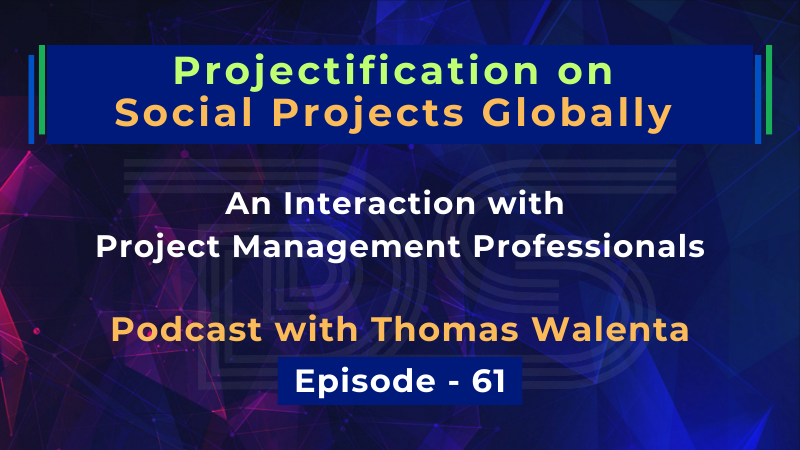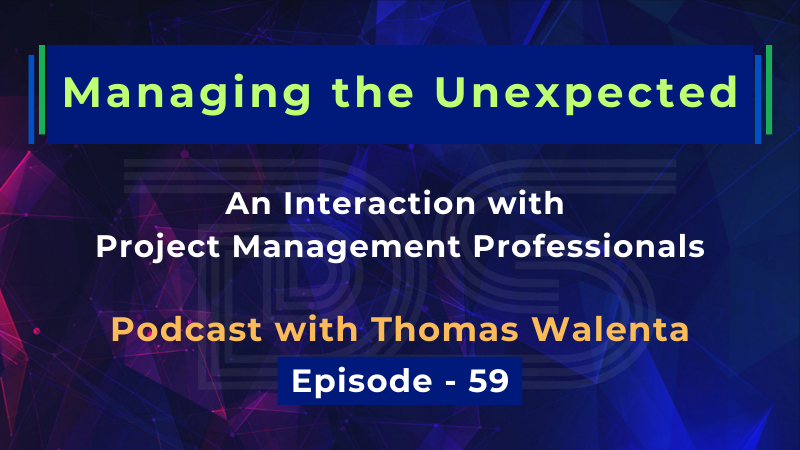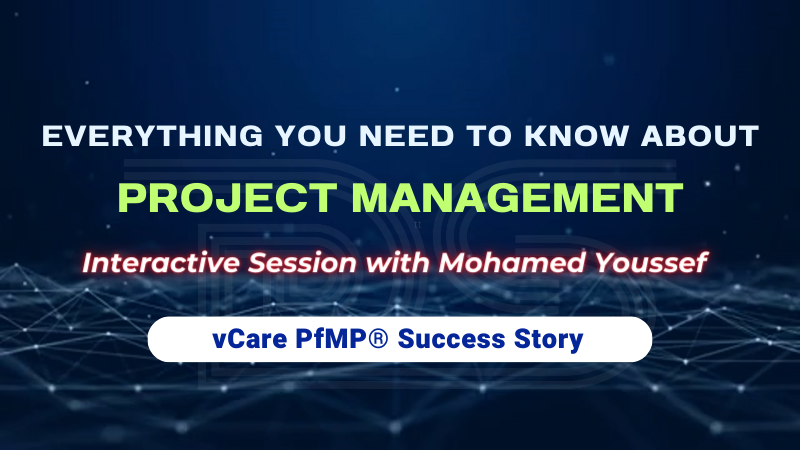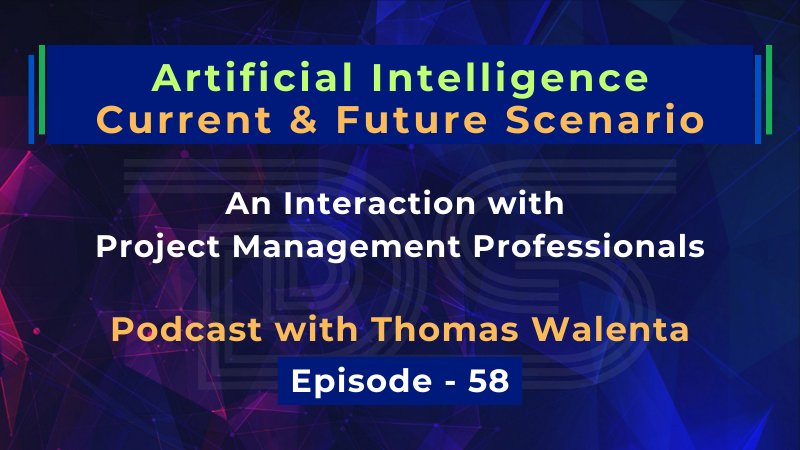
by admin | Feb 29, 2024 | Project Management
Projectification on Social Projects Globally | Thomas Walenta | Dharam Singh | Episode 61
Dive into a riveting discussion on the transformative power of global project management in the latest episode of our podcast, featuring the esteemed Thomas Walenta and myself.
🌐 Episode 61 explores the concept of ‘projectification’ and its profound influence on social projects worldwide, dissecting the intricate dynamics between project management and societal advancement.
🔍 We delve into:
– The burgeoning impact of project management on society and global practices.
– Unique challenges and requirements faced by the public sector in project portfolio management.
– Strategies for government organizations to embed a robust project management culture.
– The ripple effect of projects on societal structures and organizational operations.
– Analyzing and measuring project quality against stringent criteria.
This episode is an essential listen for senior project, program, and portfolio management professionals seeking to grasp their work’s far-reaching implications on society and understand how projects are becoming the bedrock of operational strategies globally.
🎧 Tune in to gain invaluable insights that will redefine your perspective on the project’s role in societal development.
▶️ Watch now: https://youtu.be/rMb7BJ6TuZA
🚀 Elevate Your Project Management Career:
– Register for my upcoming PgMP/PfMP Success Story Webinar: https://bit.ly/4bd68h8
– Book an obligation-free consultation session on Project management Career, training, and certifications: http://talktodharam.com
– Discover training offers and certification discounts: https://bit.ly/3jWVepD
– Stay updated with our Q&A series and certification success stories by subscribing to the vCare Project Management YouTube channel at https://bit.ly/2YF0wJl
– Follow my podcasts and interviews with Project Management Experts on YouTube at https://bit.ly/2NDY8wd

by DharamCW | Jan 13, 2024 | Project Management
Managing the Unexpected | Project Management | Thomas Walenta | Dharam Singh | Episode 59
In the face of uncertainty, exemplary project management is about planning and adapting. Join Thomas Walenta and me in a critical discussion on “Managing the Unexpected” in project environments.
We uncover:
✨ Strategies for becoming a “Highly Reliable Organization” (HRO)
✨ The art of navigating supply shortages and leading transformation amidst chaos
✨ Building robust crisis models for the modern landscape
✨ Identifying opportunities when projects veer into the unknown
Episode 59 is a treasure trove of wisdom for senior project, program, and portfolio managers seeking to steer their teams with resilience and foresight.
Don’t let unpredictability unsettle your projects. Arm yourself with the insights to manage risks and champion change.
Prepare to transform challenges into success stories.
🎯 For Project Management professionals eager to elevate their careers, seize this chance:
– Book an obligation-free 15-minute session with me: http://bit.ly/2SbhTOK
– Stay updated with our Q&A series and certification success stories by subscribing to the vCare Project Management YouTube channel at https://bit.ly/2YF0wJl
– Follow my podcasts and interviews with Project Management Experts on YouTube at https://bit.ly/2NDY8wd
– Avail Exclusive offers on our website: https://bit.ly/3jWVepD

by DharamCW | Jan 11, 2024 | Professional Development Webinars
Free Webinar: Everything You Need to Know About Project Management
Mark your calendars for Jan 18, 2024! I am thrilled to host an insightful session with Mohamed Youssef ,B.Eng,MBA , PfMP®,PgMP®, PMP®, RMP®, CCCM, MEP Operation Manager at Electro Mechanical Engineering Co., Doha, Qatar and a recent PfMP® certificant, bringing over two decades of expertise to the table. It’s a unique opportunity to gain valuable career insights and understand the nuances of the PfMP® certification.
Gain 1 PDU and enrich your project management toolkit as we explore:
✅ Showcasing your organizational contributions through meticulous project tracking.
✅ Mastering contingencies with best practices in project management.
✅ Steering stakeholder expectations alongside time plan adjustments.
✅ The art of inspirational leadership for team growth.
✅ The power of active listening in bolstering team dynamics for project triumph.
This session is crafted for project management professionals poised to lead with agility and strategic foresight. Embrace this chance to refine your leadership understanding and drive project excellence.
🔗 Don’t miss out; reserve your spot now: https://bit.ly/4aLdJmP
Session Time: 08:30 AM – 09:30 AM (PST) / 09:30 AM – 10:30 AM (MST) / 10:30 AM – 11:30 AM (CST) / 11:30 AM – 12:30 PM (EST) / 01:30 PM – 02:30 PM (BRT) / 04:30 PM – 05:30 PM (GMT) / 05:30 PM – 06:30 PM (CET) / 07:30 PM – 08:30 PM (AST) / 08:30 PM – 09:30 PM (GST) / 10:00 PM – 11:00 PM (IST)
Whether you’re tuning in from PST or IST, we’ve covered you with a global timetable. Let’s shape the future of project management together! Let’s transform challenges into opportunities together!
Elevate Your Project Management Career:
– Discover training offers and certification discounts: https://bit.ly/3jWVepD
– Book an obligation-free consultation session on PM Career, training, and certifications: http://bit.ly/2SbhTOK
– Stay updated: Subscribe to our YouTube Channels for more insights: https://bit.ly/2YF0wJl and expert interviews: https://bit.ly/2NDY8wd

by DharamCW | Jan 7, 2024 | Program Management
Letter to Future Program Portfolio Manager | Justin Buckwalter | Dharam Singh | Episode 10
In our latest webinar episode, Justin Buckwalter joins me to delve into the future of program and portfolio management. As the business world rapidly evolves, professionals in our field need to stay ahead of the curve. This episode, “Letter to Future Program Portfolio Manager,” is a must-watch for those aspiring to shape the future of this dynamic industry.
We discuss vital topics for the future of program/portfolio management, including:
– The evolving landscape of program/portfolio management in 2023 and beyond.
– Challenges faced by C-Suite executives and board members in adapting to change.
– The increasing importance of professional judgment over intuition in decision-making.
– Key competencies and skills will be crucial for future program/portfolio managers.
– Navigating disruptions and the digital transformation in program/portfolio management.
– The significance of training and development for insightful, balanced, and innovative management.
– The role of shared innovation in fostering long-term global client relationships.
– Debating the reality of future-proofing projects, programs, and portfolios.
👀 Discover insightful perspectives on preparing for the future in program and portfolio management. Watch now: https://youtu.be/yOeUdSaRs2M
Join the conversation and share your thoughts on these forward-thinking topics.
🎯 For Project Management professionals eager to elevate their careers, seize this chance:
– FREE webinar series registration on PgMP® & PfMP®: https://bit.ly/3Z7kzMl
– Book an obligation-free 15-minute session with me: http://bit.ly/2SbhTOK
– Stay updated with our Q&A series and certification success stories by subscribing to the vCare Project Management YouTube channel at https://bit.ly/2YF0wJl
– Follow my podcasts and interviews with Project Management Experts on YouTube at https://bit.ly/2NDY8wd
– Avail Exclusive offers on our website: https://bit.ly/3jWVepD

by DharamCW | Jan 3, 2024 | Project Management
🎯 Episode Highlights:
– Unveiling AI as the game-changer for Project Management.
– Becoming an AI-savvy project leader.
– Navigating the AI disruption for organizations and project executives.
– Utilizing AI assistants for on-schedule and on-budget project delivery.
– The strategic investment in AI training for project teams.
– Senior leadership and the journey beyond traditional methods for AI integration.
– Tackling the scope creep unique to AI in project management.
– The provocative question: Will AI replace the role of project managers?
🎯 For Project Management professionals eager to elevate their careers, seize this chance:
– FREE webinar series registration on PgMP® & PfMP®: https://bit.ly/3Z7kzMl
– Book an obligation-free 15-minute session with me: http://bit.ly/2SbhTOK
– Stay updated with our Q&A series and certification success stories by subscribing to the vCare Project Management YouTube channel at https://bit.ly/2YF0wJl
– Follow my podcasts and interviews with Project Management Experts on YouTube at https://bit.ly/2NDY8wd
– Avail Exclusive offers on our website: https://bit.ly/3jWVepD











Recent Comments